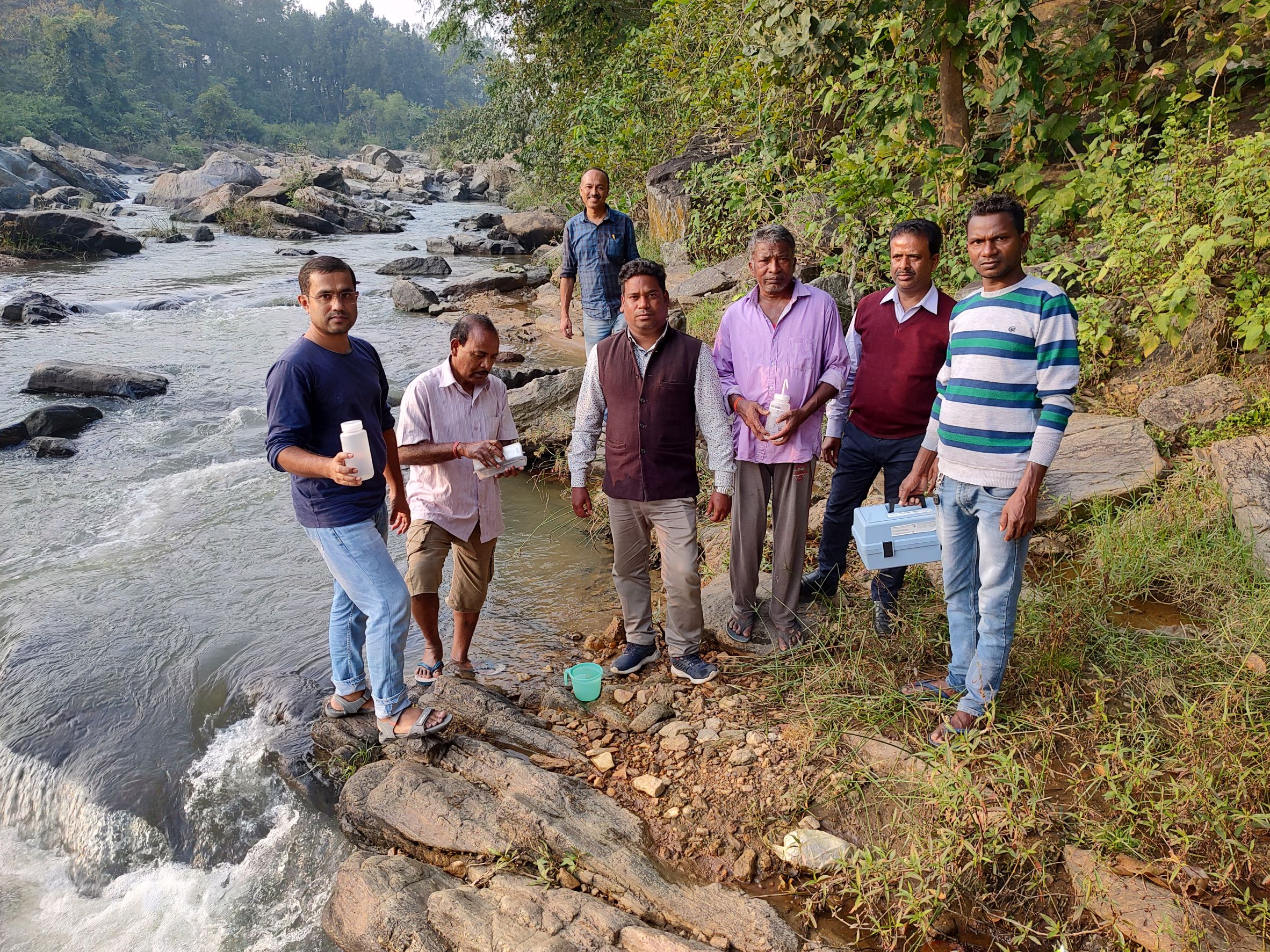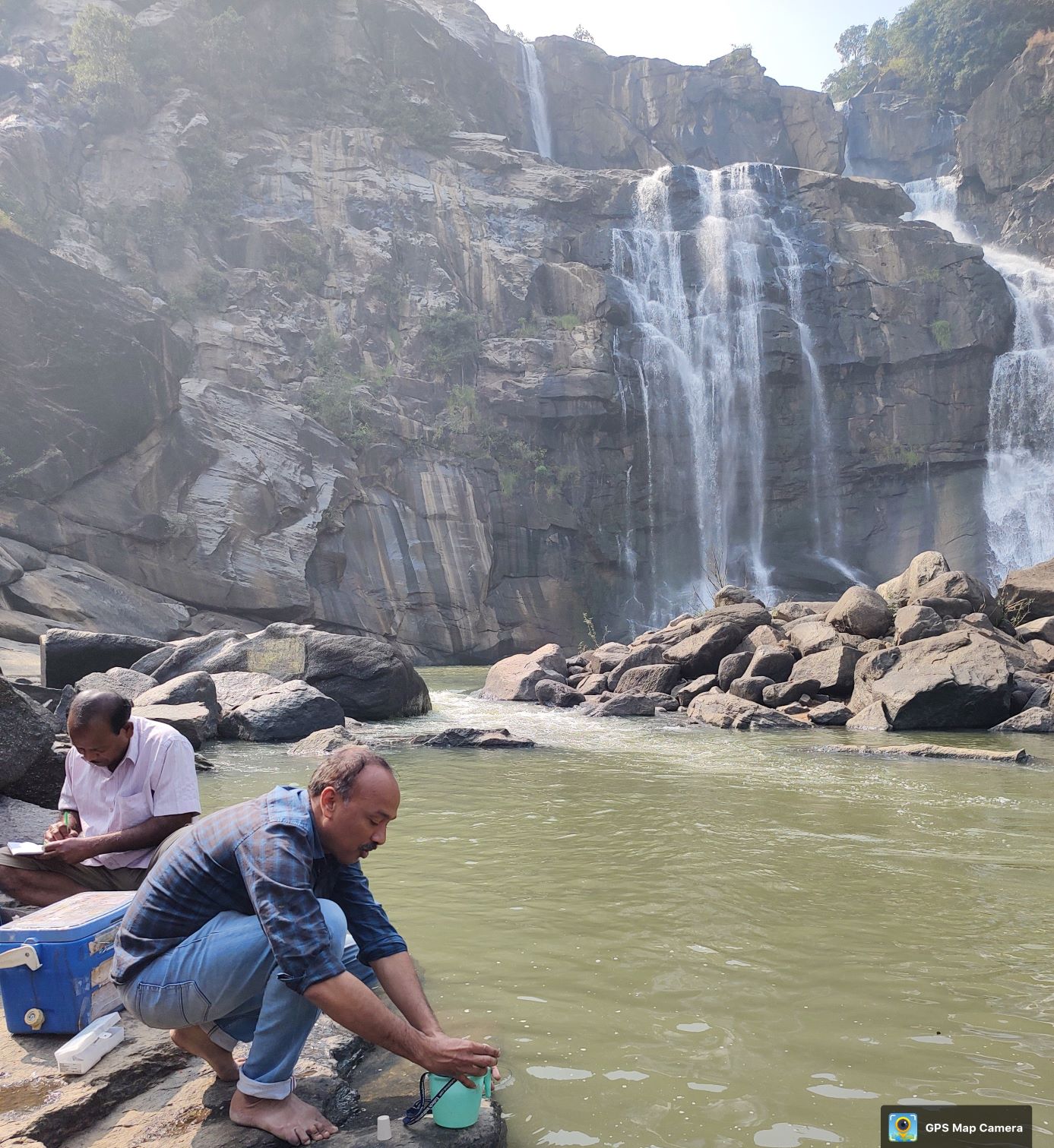Overview
Publications
Recruitment
Intranet
CIFRI Corners'
To know the status of aquatic biodiversity along with ecological habitats, a team of ICAR-CIFRI recently visited selected water falls region around Ranchi (Chhota Nagpur plateau), which are under protected habitats. For the initial survey a total of four water falls such as Dassam falls, Hundru waterfalls, Jonha waterfalls, and Panchgagh falls were explored. The Dassam falls also known as Dassamghagh (23.143358 0N, 85.46644 0E) a 44 meters height falls located in Ranchi district. The Dassamfalls are a natural cascade across the Kanchi River, a tributary of the Subarnarekha River. The Hundru waterfalls (23.4500 0N, 85.6500 0E) located at Ranchi district, a 98 meters height falls on the course of Subarnarekha River. The Jonha waterfalls (23.2030 0N, 85.3630 0E) also called Gautamdhara falls are in Ranchi district, a 43 meters height falls. It is a hanging Valley falls, the Gunga River hangs over its master stream, Raru River and forms the falls. Panchgagh falls (22.5641 0N, 85.1517 0E) is in Khunti district and formed one of Banai River streams.
During the survey, a total of 27 finfish species were recorded from four selected waterfalls under Ranchi and Khunti District of Jharkhand. Species pobo catfish, Ompokpabo (Hamilton, 1822), was observed to be Near Threatened (NT)in the studied systems. Significant availability of Genus Garra (Garra Lamta, G. gotyla, Garraspp.) followed by barbs (Puntius conchonius, Pethia ticto), and murrels (Channa punctatus, Channa gachua) in live condition in the studied waterfalls (Dassam, Hundru, Jonha, and Panchgagh) revealed possibility of development of ornamental fishery using brooders of indigenous riverine fishes.
Waterfalls (Dassam, Hundru, Jonha, and Panchgagh) of Ranchi and Khunti districts of Jharkhand with the availability of several indigenous fishes (congenial aquatic habitat) and absence of any exotic fishes indicated the possibility of using those river stretches as reference (unperturbed) river habitat. Other than fish species, 22 species of phytoplankton and 2 species of zooplanktons were also recorded.
Documentation of aquatic biodiversity along with their respective ecological habitats under protected areas is a prerequisite, to know about their respective habitats in the ongoing habitat alterations scenario. Such study not only strengthens the biodiversity aspects, but also aware the local people about the importance of it, and how to conserve such protected habitats. The survey was led by Dr. Ranjan K. Manna, Dr. Dibakar Bhakta, and Mr. R.C. Mandi with the close supervision of Dr. Basanta K. Das, Director, ICAR-CIFRI under the ongoing Protected Area project.


Updated on 27/12/2021










